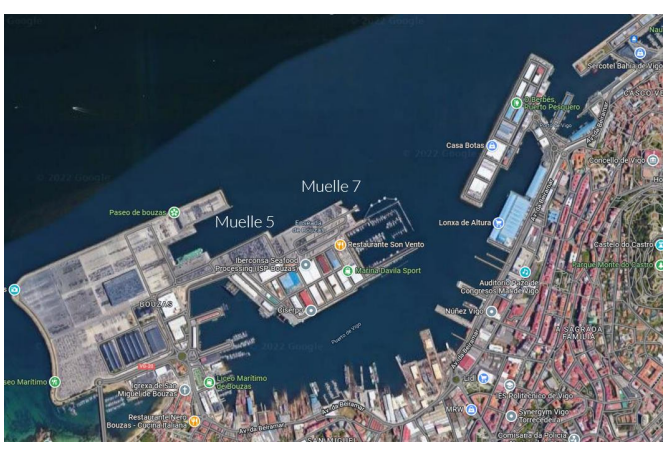Status
In progress
Description
The overall objective of this project is to deploy an infrastructure for the maritime electrification of the Port of Vigo through the implementation of an OPS system to supply the electrical demands of docked ships and thus reduce greenhouse gas emissions, noise and local emissions that the ships themselves emit into the atmosphere.
Power will be supplied using renewable energy generated on-site at a photovoltaic facility within the scope of the project. Additional demand requirements will be met by additional renewable generation through guarantees of origin.
Agreements with the Port Authority of Vigo, other port agents and neighboring neighborhoods will be considered to achieve shared self-consumption and supply green energy to the rest of the port's energy needs.
A suitable location has been selected for the installation of an OPS system for Ro-Ro vessels at piers 5 and 7, and it is intended to serve Ro-Ro vessels of the UECC and Suardiaz shipping companies.

An increasing berthing scenario has been foreseen in order to increase the number of berths from 1-2 to 5 per week.
Based on the estimated data for this type of vessel, it has been decided to install a connection with a design power of 1,600 kW for the UECC shipping company and another connection of 1,200 kW for the Suardiaz shipping company.
The deployment of the solar installation will be carried out according to the growing demand, foreseeing two deployment phases with approximately 50% of the installed capacity in each of them. There will be a first stage of adaptation of the sites and installation of connections and pre-installations as well as general electrical switchgear.
- 1st Phase: 6,000 m2 - 1.2 MWp - 1.7 GWh/year Based on the demand of the first years, the project starts with a power limited to 1,237 kWp that will generate about 363,000 kWh per year self-consumed (12%).
- 2nd Phase: 12,000 m2 - 2.4 MWp - 3.4 GWh/year From 2028 the installation will be increased to meet a growing demand, estimated at 5-6 GWh/year so that 49% of the energy generated will be consumed in the OPS covering 23% of its global demand.
Expected results
- The installation of cold ironing type loading points will substantially reduce greenhouse and local gas emissions in port areas, since when the energy comes from a renewable source (photovoltaic) as in the case of this project, emissions at ship calls will be reduced to 100%.
- The noise reduction in the loading and unloading operations of vessels with cold ironing is substantial; according to the International Maritime Organization (IMO), it is estimated that by using OPS it is possible to reduce the noise impact produced by ships by up to 16 dB.
- A "call effect" is expected to increase vessel traffic in ports where cold ironing is installed, since it is an emerging technology, and more and more shipping companies are demanding and adopting this system for their port operations.
Contribution
- Green and Innovative Port: committed to Blue Energy, given that it will contribute to the use of new forms of energy supply on ships with a viable, efficient and safe structure.
Project funded by the European Union - NextGenerationEu.
